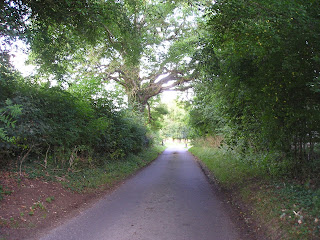Purple Haze
Ask those that know Exmoor – England’s smallest National
Park – to conjure up just one image of it and you would get a number of
different answers. For some it is the
wild ponies, others the rushing streams but mostly the answer would be the sea or
the moorland. On Exmoor you are never
very far from either.
At this time of year the moors are, perhaps, at their very best: awash with a purple haze of heather in bloom, speckled with the yellow flowers of furze – the local dialect word for gorse. During the cooler months, however, the heather looks very different, drab browns and greens giving no hint of the glory to come.%2B%2B%2Bcopyright.jpg)

At this time of year the moors are, perhaps, at their very best: awash with a purple haze of heather in bloom, speckled with the yellow flowers of furze – the local dialect word for gorse. During the cooler months, however, the heather looks very different, drab browns and greens giving no hint of the glory to come.
The heather is an important resource for animals whether it
is food for the ponies, sheep or cattle that roam the open spaces or the deer. In the past – they died out in 1969 – black grouse
fed here too, the record of their existence recorded in place names such as
Heath Poult Cross, heath poult being the dialect word for the grouse. For other
birds that nest close to the ground the heather protects them with its cover.
Although at a glance the heather all looks the same, there
are three types, quite easily distingushable when in flower. Cross-leaved Heath (Erica tetralix) has paler flower clusters at the top of the stems;
Bell Heather (Erica cinerea) is a
rich crimson-purple in flower whereas the true Heather or Ling (Calluna vulgaris) is softer both in
colouring and appearance. Together, they
blend to create a colour mix of shadow and light.
To keep the heather moorland in good order, controlled
burning is carried out once the plants have become old and woody, an ancient method
called swaling. Only selected areas are
burned, usually on a five to ten year cycle between October and early
April.
The fires are watched carefully, not just to prevent their
spreading to other areas but to ensure that the rootstock is not damaged from
which the new, tender shoots soon grow.
The burning of the moor is both exciting and interesting to watch for
the smoke can be seen for many miles. It
is difficult to imagine when the stems are blackened and charred that life will
ever return. The photograph below shows the regrowth after four years.
%2B%2B%2Bcopyright.jpg)
Exmoor has the highest cliffs in England and these are made
even more dramatic by the moorland which extends to their edge, the heather even
clinging to the steep sides as they tumble to the sea, caring little for the
salt-laden winds that continually buffet them.
On a sunny day in August the combination of blue sea, purple heather,
yellow gorse and blue sky, combined with Exmoor’s splendid views, is a sight
rarely forgotten.

%2B%2B%2Bcopyright.jpg)
%2B%2B%2Bcopyright.jpg)

%2B%2B%2Bcopyright.jpg)
%2B%2B%2Bcopyright.jpg)
%2B%2B%2Bcopyright.jpg)
%2B%2B%2Bcopyright.jpg)
%2B%2B%2Bcopyright.jpg)

Comments
Post a Comment